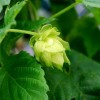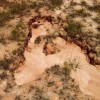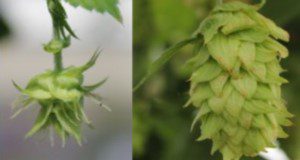Hops (Humulus lupulus) are perennial plants commonly harvested for their mature strobiles, also referred to as cones, which are primarily dried and used as a bittering agent and preservative in beer production. The two primary factors of harvest timing and harvest method can have large impacts on the quality and economics of the finished product. The decision of when and how to harvest is important and should rely upon growing-region-specific environmental conditions, physical observations of the cones, and the wants and needs of the individual producer. This new 4-page publication of the UF/IFAS Environmental Horticulture Department describes the primary methods used in hop harvesting, including field, indoor, and machine harvesting. Written by Sean Michael Campbell and Brian J. Pearson.
https://edis.ifas.ufl.edu/ep578
Tag: Brian J. Pearson
Florida Edible Garden Plants: Hops (Humulus lupulus)
 Hops are perennial, herbaceous climbing plants commonly cultivated for their strobiles or cones (Figure 1). The cones are often used for flavoring and aroma in food, tea, and beer (Burgess 1964). Hops can make a unique addition to a home garden or landscape. It grows rapidly in the early spring to late summer. Plants reach a mature height of 18–25 feet in one year and produce cones from mid-summer to early fall. This 2-page fact sheet was written by Brian J. Pearson, and published by the UF Department of Environmental Horticulture, October 2013.
Hops are perennial, herbaceous climbing plants commonly cultivated for their strobiles or cones (Figure 1). The cones are often used for flavoring and aroma in food, tea, and beer (Burgess 1964). Hops can make a unique addition to a home garden or landscape. It grows rapidly in the early spring to late summer. Plants reach a mature height of 18–25 feet in one year and produce cones from mid-summer to early fall. This 2-page fact sheet was written by Brian J. Pearson, and published by the UF Department of Environmental Horticulture, October 2013.
http://edis.ifas.ufl.edu/ep488
Soil Characteristics and Management Practices for Urban Residential Landscapes
 Newly constructed urban residential landscape soils sampled within Central Florida are dominated by large sand particles and possess low soil moisture retention. Therefore, irrigation and fertilizer applications should be managed to match site conditions and prevent overapplication of water and nutrient leaching. Sampled soils in newly developed urban residential communities were found to be highly compacted and likely to inhibit plant establishment and growth. This 3-page fact sheet was written by Brian J. Pearson, and published by the UF Department of Environmental Horticulture, July 2013.
Newly constructed urban residential landscape soils sampled within Central Florida are dominated by large sand particles and possess low soil moisture retention. Therefore, irrigation and fertilizer applications should be managed to match site conditions and prevent overapplication of water and nutrient leaching. Sampled soils in newly developed urban residential communities were found to be highly compacted and likely to inhibit plant establishment and growth. This 3-page fact sheet was written by Brian J. Pearson, and published by the UF Department of Environmental Horticulture, July 2013.
http://edis.ifas.ufl.edu/ep479
